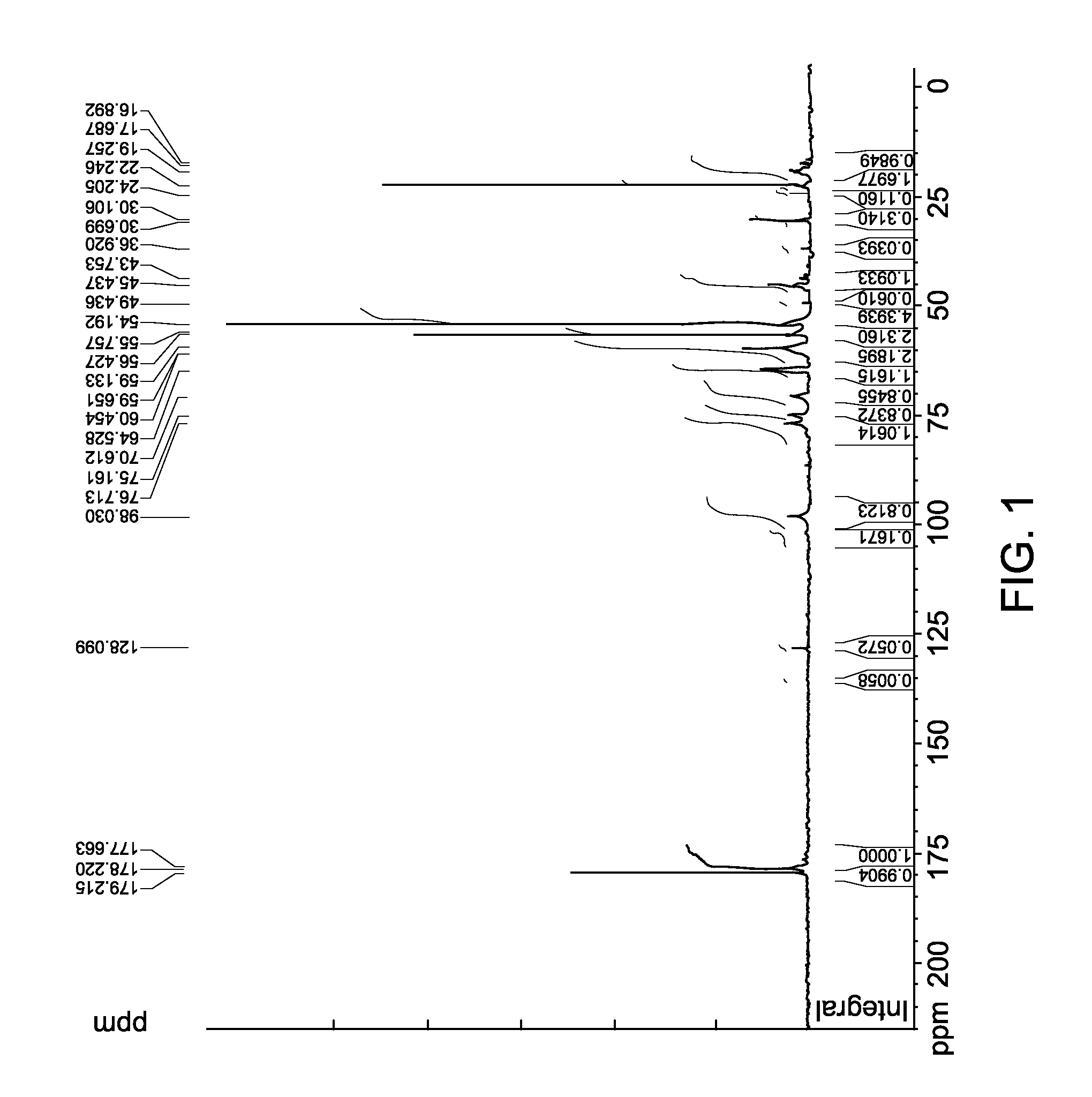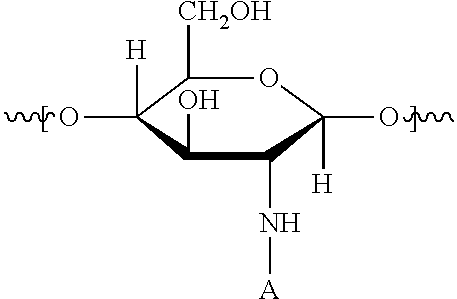Treatment additives, methods for making and methods for clarifying aqueous media
a technology of additives and aqueous media, applied in the field of treatment additives for clarifying aqueous media, can solve the problems of additives becoming insoluble in aqueous media and limited
- Summary
- Abstract
- Description
- Claims
- Application Information
AI Technical Summary
Benefits of technology
Problems solved by technology
Method used
Image
Examples
example 1
[0038]A 4-necked flask was equipped with a mechanical stirrer, reflux condenser, thermometer socket and nitrogen inlet. 250.00 g of deionized water was charged to the reactor flask. The flask was stirred at 300-350 rpm and a nitrogen blanket was applied. The reaction mass was heated to 25-30° C. 21 g of Chitosan was added to the flask. The flask was heated to 72-75° C. 12 g of glacial acetic acid was added to the Chitosan. The mixture was stirred for 60 minutes and then cooled to 35-40° C. 50 g of 2-Methacryloyloxyethyltrimethylammonium methyl sulfate solution was added to the flask and nitrogen sparged for 20 minutes. The flask was heated to 73-75° C. and a sodium metabisulfite solution (2.05 g in 8.72 g of water) and t-butyl hydroperoxide (t-BHP) (2.68 g in 8.32 g of water) were charged to the flask solution simultaneously over a period of 1 hour via syringe pump. The temperature was maintained at 73-75° C. and held at that temperature for 1 hour. The mixture was cooled to room te...
example 2
[0040]A synthetic only wastewater was prepared. An oily mixture was prepared by blending mineral oil, oleic acid and Triton-CFI 0, which is a linear alcohol ethoxylate and commercially available from The Dow Chemical Company. The mixture contained 43% mineral oil, 37% oleic acid and 20% triton-CF10. The mixture was stirred on a hot plate for 15 minutes followed by blending the mixture in a blender for 10 minutes 15 g of the oily mixture was added to a blender with 385 g of distilled water and blended for seven minutes. The resulting emulsion was diluted to 1:9 by volume using tap water. The pH of the wastewater was 7.0.
[0041]An ASTM D2035-80 testing procedure was used to determine the efficacy of the treatment. Wastewater amples were added to six 300-ml jars and placed in six-paddle stirrer. The treatment coagulant as prepared in Example 1 was added to the jars in the dosages shown in Table 2. The samples were stirred at a speed of 100 rpm for two minutes and at a speed of 35 rpm fo...
example 3
[0043]Wastewater from the Effluent Treatment Plant of a Refinery was tested in accordance with Example 2. The wastewater had a pH of 10.9, a conductivity of 1365, a Total Dissolved Solids (TDS) of 946.4 and a turbidity of 200. Data is shown in Table 3,
TABLE 3TreatmentTurbidity(ppm per dose)(FAU1)02003.3586.6609.97313.2761FAU is Formazin Attenuation Unit
[0044]The treatment significantly reduced the turbidity.
PUM
| Property | Measurement | Unit |
|---|---|---|
| temperature | aaaaa | aaaaa |
| temperature | aaaaa | aaaaa |
| temperature | aaaaa | aaaaa |
Abstract
Description
Claims
Application Information
 Login to View More
Login to View More - R&D
- Intellectual Property
- Life Sciences
- Materials
- Tech Scout
- Unparalleled Data Quality
- Higher Quality Content
- 60% Fewer Hallucinations
Browse by: Latest US Patents, China's latest patents, Technical Efficacy Thesaurus, Application Domain, Technology Topic, Popular Technical Reports.
© 2025 PatSnap. All rights reserved.Legal|Privacy policy|Modern Slavery Act Transparency Statement|Sitemap|About US| Contact US: help@patsnap.com



